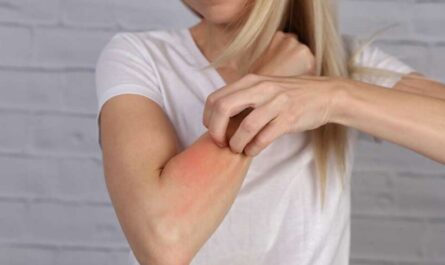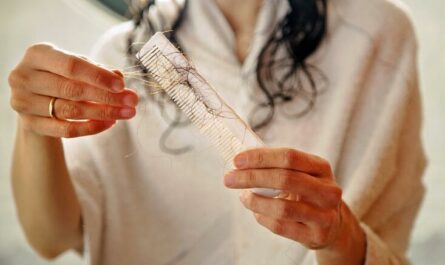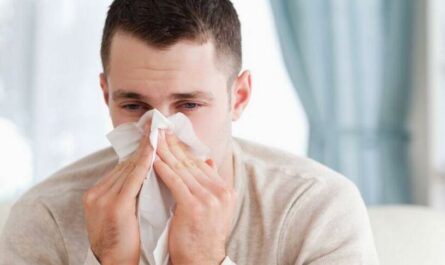Dealing with ingrown hairs can be frustrating and uncomfortable. Whether caused by shaving, waxing, or other hair removal methods, these hairs can lead to redness, inflammation, and even painful infections. Fortunately, several effective remedies can help alleviate the symptoms and promote healing. This article will explore 16 of the best remedies for ingrown hair.
What is Ingrown Hair?
An ingrown hair is a condition where hair grows back into the skin instead of rising up and out of the follicle. This can occur when the hair follicle becomes clogged or blocked, causing the hair to curl back or grow sideways beneath the skin’s surface.
Ingrown hairs commonly affect areas where hair removal methods, such as shaving, waxing, or plucking, have been used.
When ingrown hair develops, it often leads to symptoms such as redness, inflammation, itching, and the formation of small, raised bumps or pustules. In some cases, the affected area may become painful or develop an infection.
Ingrown hairs can occur in various body parts, including the face, neck, armpits, legs, and pubic area. People with curly or coarse hair tend to be more prone to ingrown hair due to the hair’s natural tendency to curl back into the skin.
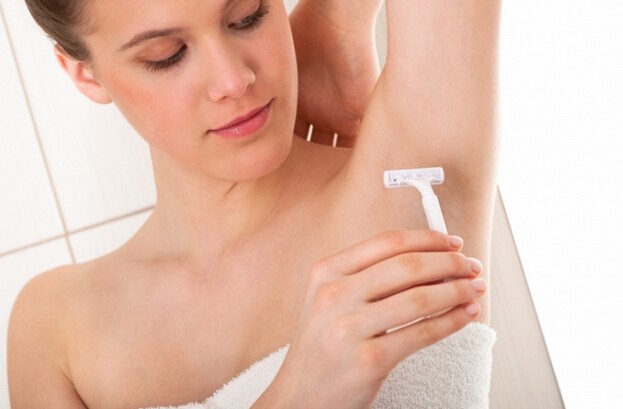
16 Best Remedies for Ingrown Hair
Ingrown hair can be a pesky issue, but with the right remedies, you can alleviate the discomfort and promote healthy skin. Let’s dive into the 16 remedies that will help you address this concern.
1. Exfoliate Regularly
Exfoliation is crucial when it comes to preventing ingrown hair. By removing dead skin cells and unclogging hair follicles, you can minimize the chances of hairs getting trapped beneath the surface.
- Wet your skin and apply a gentle exfoliating scrub or brush.
- Massage the scrub or brush in circular motions, focusing on the areas prone to ingrown hair.
- Rinse off the scrub thoroughly and pat your skin dry.
2. Moisturize Daily
Proper hydration of the skin is essential in preventing ingrown hair. Regularly moisturizing the affected areas helps keep the skin soft and supple, reducing the likelihood of hair curling back into the follicles.
- After exfoliating, apply a moisturizer to the affected areas.
- Use a moisturizer that contains soothing ingredients like aloe vera or jojoba oil.
- Massage the moisturizer into your skin until it is fully absorbed.
3. Shave with Care
If you shave regularly, following the correct techniques to avoid ingrown hair is important. Use a sharp razor blade and shave in the direction of hair growth. Applying a lubricating shaving gel or cream can also help reduce friction and irritation.
- Before shaving, wet the area with warm water to soften the hair and open up the pores.
- Apply a lubricating shaving gel or cream to reduce friction.
- Shave in the direction of hair growth using a sharp razor blade.
- Rinse the blade frequently to prevent buildup.
4. Consider Waxing
Waxing is an effective method to remove hair from the root, reducing the likelihood of ingrown hair. When the hair grows back, it emerges through a clean follicle, minimizing the chances of becoming trapped beneath the surface. However, if you have sensitive skin, proceed cautiously and perform a patch test before waxing larger areas.
- Choose a reputable salon or waxing professional.
- Cleanse the skin before waxing to remove any dirt or oils.
- Apply a thin layer of warm wax in the direction of hair growth.
- Place a cloth strip over the wax and press it down firmly.
- Quickly pull the strip off in the opposite direction of hair growth.
5. Avoid Tight Clothing
Wearing tight clothing can exacerbate ingrown hair problems, especially in areas prone to friction, such as the bikini line or underarms.
- Opt for loose-fitting garments that don’t put pressure on the skin.
- Choose breathable fabrics like cotton to allow air circulation.
- Avoid wearing tight underwear or clothing that rubs against the affected areas.
6. Use a Warm Compress
Applying a warm compress to the affected area can help soothe inflammation and encourage the hair to break through the skin’s surface.
- Soak a clean cloth in warm water and wring out the excess.
- Gently press the warm compress onto the ingrown hair for a few minutes.
- Repeat this process several times daily to help the hair break through the skin.
7. Try Tea Tree Oil
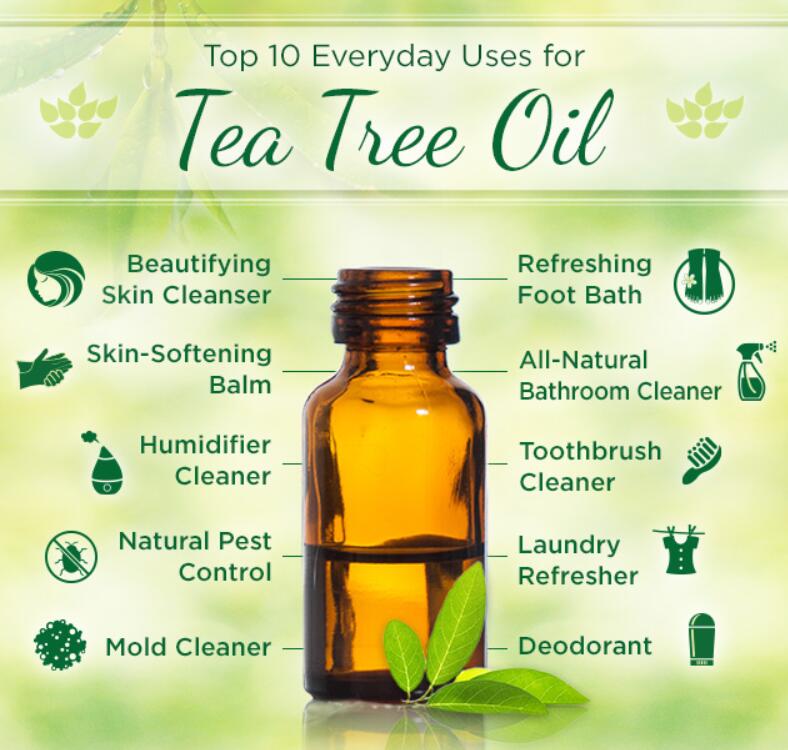
Tea tree oil is known for its antibacterial and anti-inflammatory properties, making it an excellent remedy for ingrown hair.
- Dilute a few drops of tea tree oil with carrier oil like coconut oil.
- Add a cotton ball to the diluted tea tree oil to the ingrown hair.
- Leave it on for a few minutes, then rinse off with warm water.
- Repeat this remedy twice a day until the redness and swelling subside.
8. Aloe Vera Gel
Aloe vera gel is renowned for its soothing and healing properties. Apply a thin layer of pure aloe vera gel to the affected area to alleviate inflammation and promote faster healing. Aloe vera can also help reduce the appearance of scars that may result from ingrown hairs.
- Extract fresh gel from an aloe vera leaf or use pure aloe vera gel.
- Apply a thin layer of aloe vera gel to the affected area.
- Allow it to dry naturally without rinsing.
- Repeat this process several times a day for soothing relief.
9. Salicylic Acid Solution
Salicylic acid is a popular ingredient in many skincare products due to its exfoliating properties. Applying a salicylic acid solution to the affected area can help remove dead skin cells and unclog hair follicles, preventing ingrown hair.
- Choose a salicylic acid solution or product designed for ingrown hair.
- Apply a small amount to a cotton ball or pad.
- Gently dab the solution onto the ingrown hair.
- Follow the instructions on the product for frequency of use.
10. Topical Antibiotics
In some cases, ingrown hair can lead to infection. If you notice signs of infection, such as increased redness, swelling, or pus, it’s important to seek medical advice. Your doctor may prescribe a topical antibiotic to prevent further complications and promote healing.
11. Avoid Picking or Scratching
While picking or scratching at an ingrown hair may be tempting, it’s important to resist the urge. Picking can introduce bacteria into the area, leading to infection. Additionally, excessive scratching can cause further irritation and potentially worsen the condition.
- Resist the temptation to pick at or scratch the ingrown hair.
- Picking can introduce bacteria and lead to infection.
- Keep the area clean and avoid touching it unnecessarily.
12. Use Sterile Tweezers
If the ingrown hair is visible and close to the surface, you can carefully use sterile tweezers to lift the hair out gently. Ensure that the tweezers are clean and disinfected before use to minimize the risk of infection.
- Sterilize tweezers if the ingrown hair is visible and close to the surface.
- Gently lift the hair out using the tweezers.
- Be careful not to dig into the skin or cause any damage.
13. Apply Honey

Honey is antibacterial and anti-inflammatory, making it a beneficial remedy for ingrown hair.
- Apply a small amount of honey directly to the ingrown hair.
- Allow it to sit for a few minutes to soothe the skin.
- Rinse off with warm water and pat dry.
14. Use a Sterile Needle
In some cases, ingrown hair may be deeply embedded and difficult to remove. If you feel comfortable doing so, you can use a sterile needle to lift the hair out carefully. Disinfect the area, the needle, and your hands before attempting this method. However, exercise caution to avoid injury.
- Sterilize a needle with alcohol or by boiling it in hot water.
- Gently insert the needle into the skin alongside the ingrown hair.
- Lift the hair out carefully without causing any harm.
- Cleanse the area after removing the hair.
15. Calamine Lotion
Calamine lotion is known for its soothing properties and can relieve the itching and discomfort associated with ingrown hair.
- Shake the calamine lotion bottle well before use.
- Apply a thin layer of calamine lotion to the affected area.
- Allow it to dry naturally without rinsing.
- Reapply as needed for relief from itching and inflammation.
16. Seek Professional Help
If you have recurrent or severe ingrown hair problems, it’s advisable to seek professional help. A dermatologist can provide personalized recommendations and treatments tailored to your specific needs. They may suggest procedures like laser hair removal or prescribe specialized products to address the issue.
How to Prevent Ingrown Hair in the Future?
Here are some effective tips to help you avoid ingrown hairs:
- Exfoliate Regularly: Gently exfoliate the skin with a mild scrub or brush to remove dead skin cells and prevent them from blocking hair follicles. Regular exfoliation can reduce the chances of hairs getting trapped beneath the skin.
- Use a Sharp Razor: Always use a sharp, clean razor when shaving. Dull blades can lead to uneven hair cuts, increasing the risk of ingrown hairs. Replace your razor blades regularly.
- Shave in the Right Direction: Shave in the direction of hair growth to minimize the risk of hair curling back into the skin. Avoid shaving against the grain, which can cause irritation and ingrown hairs.
- Keep Skin Hydrated: Moisturize your skin daily with a gentle, non-comedogenic moisturizer. Hydrated skin is less likely to develop ingrown hairs.
- Avoid Tight Clothing: Tight clothing can cause friction and pressure on the skin, potentially leading to ingrown hairs. Opt for loose-fitting clothes, especially after hair removal.
- Don’t Over-shave: Allow some time between shaving sessions to give your skin a chance to recover. Shaving too frequently can irritate the skin and increase the likelihood of ingrown hairs.
- Use Hair Removal Creams Properly: If using hair removal creams, follow the instructions carefully and do a patch test before applying them to larger areas. Avoid leaving the cream on for longer than recommended.
- Avoid Ingrown-prone Areas: If you are prone to ingrown hairs, consider alternatives to hair removal in particularly sensitive areas, such as the bikini line or underarms.
- Consider Alternative Hair Removal Methods: Waxing or using an epilator can help prevent ingrown hairs as they remove the entire hair from the root, reducing the risk of hair curling back into the skin.
- Post-Hair Removal Care: Apply a soothing lotion or aloe vera gel after hair removal to calm the skin and reduce inflammation. Avoid touching or scratching the treated area.
FAQs
1. Are ingrown hairs painful?
Ingrown hairs can be painful, especially when they become inflamed or infected. They can cause redness, itching, and discomfort in the affected area.
2. Can ingrown hairs lead to infection?
Yes, if left untreated or picked or scratched, ingrown hairs can become infected. Signs of infection include increased redness, swelling, warmth, and pus.
3. How long does it take for an ingrown hair to go away?
The duration of an ingrown hair varies depending on the individual and the severity of the condition. In most cases, ingrown hairs resolve on their own within a few days to a couple of weeks.
4. Can certain hair removal methods reduce the occurrence of ingrown hairs?
Yes, certain hair removal methods, such as waxing or laser hair removal, can reduce the occurrence of ingrown hairs. These methods remove the hair from the root, preventing it from growing back into the skin.
5. When to see a doctor?
Most cases of ingrown hairs can be managed at home with proper care and preventive measures. However, there are instances when it’s advisable to see a doctor, especially if you experience any of the following concerning signs:
- Severe Pain or Discomfort: If the ingrown hair causes intense pain or discomfort that doesn’t improve with home remedies.
- Signs of Infection: If the affected area becomes red, swollen, and tender, and there is the presence of pus or drainage, it may indicate an infection.
- Recurring or Persistent Ingrown Hairs: If you frequently experience ingrown hairs despite taking preventive measures.
- Large or Deep Ingrown Hairs: If an ingrown hair is deep-seated or causes a noticeable lump or bump beneath the skin, it may require professional intervention for safe and effective removal.
- Cyst Formation: In some cases, ingrown hair can lead to the development of a painful cyst or abscess.
- Spreading Infection: If an ingrown hair infection spreads to other areas of the skin, it may require medical attention to prevent further complications.
- Underlying Skin Conditions: If you have an existing skin condition, such as folliculitis or keloid-prone skin, that predisposes you to frequent ingrown hairs.
- Unsuccessful Home Treatment: If your attempts to manage the ingrown hair at home are unsuccessful or exacerbate the condition.

